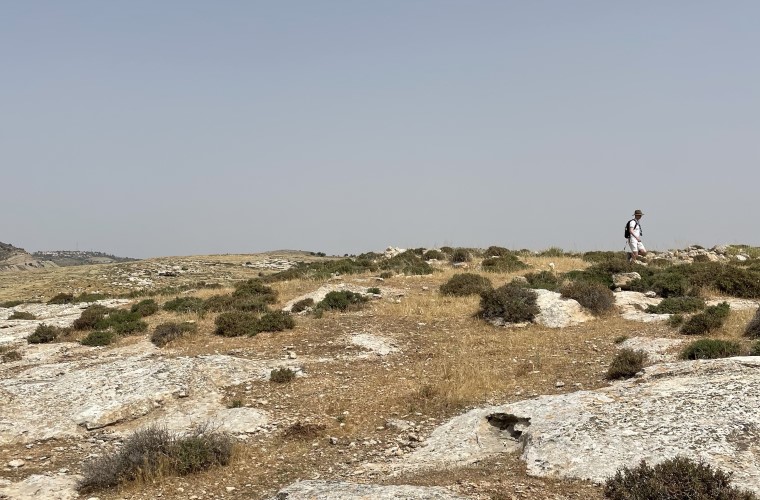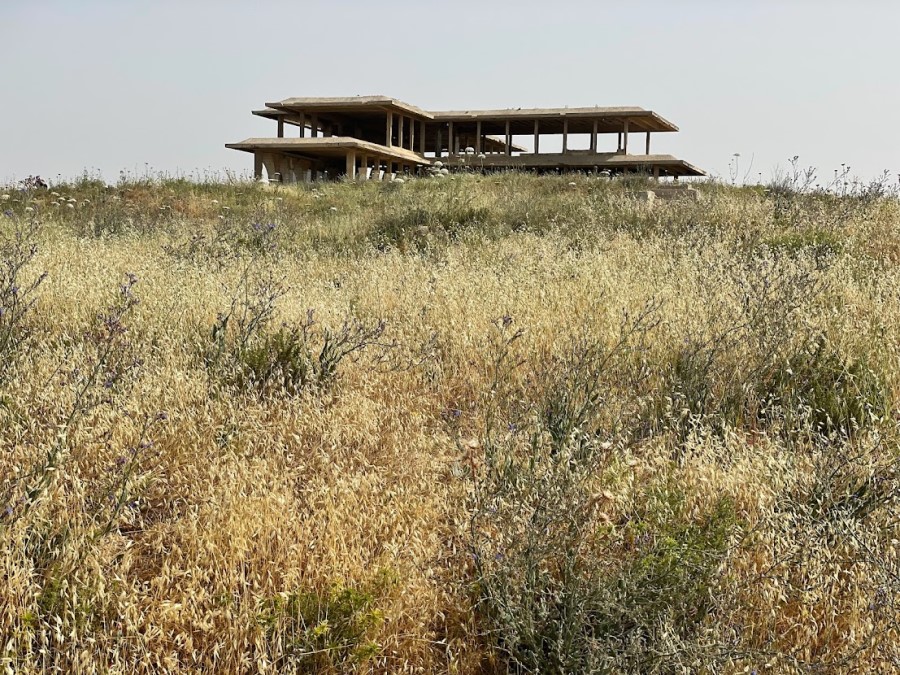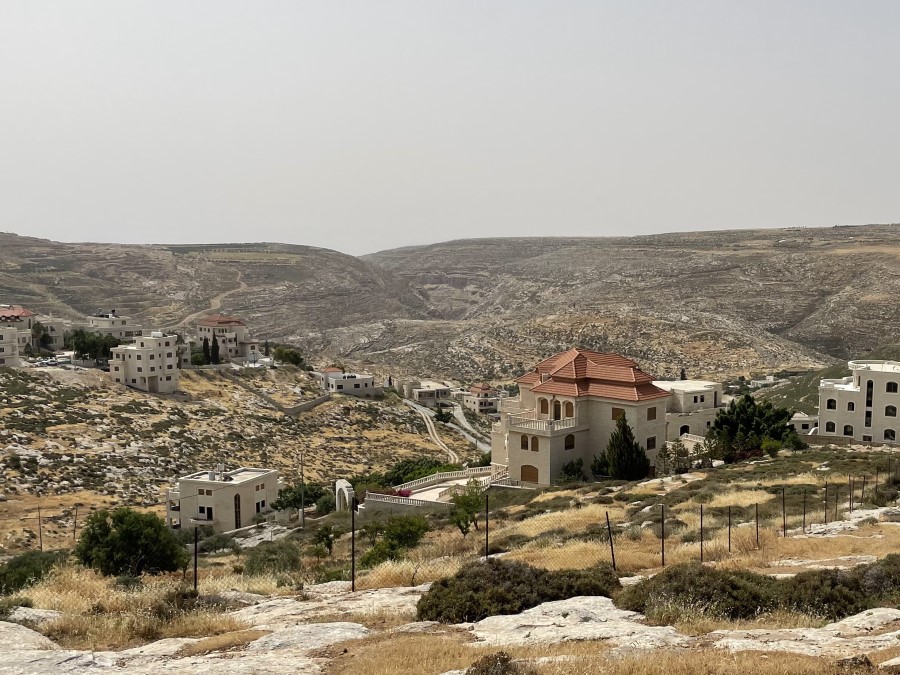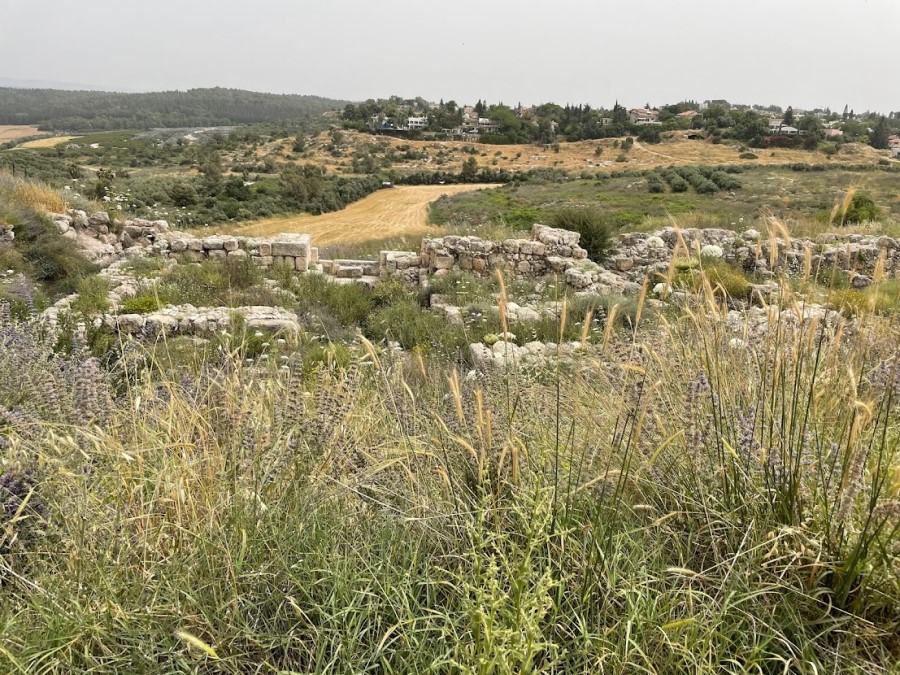Shalom!
Today was all about exploring the circle of ancient cities just north of Jerusalem (on what is called “the Central Benjamin Plateau”). Since these cities formed an important economic and strategic crossroads, many OT events took place on this plateau. Here are a few highlights from our investigation today:
We started our day visiting Tel el-Full just north of Jerusalem (a “tel” or “tell” is an archaeological term borrowed from Arabic for a mound covering an ancient ruin). Tel el-Full is the mound covering Gibeah of Benjamin, a somewhat infamous city in the OT as the site of Sodom-level depravity (see Judges 19-21) and as the hometown and capital city of King Saul (1 Sam 10:26). Archaeologists have discovered the remains of a palace-fortress here of the same time period the Bible describes as Saul’s kingship. Today, however, the mound is topped by King Hussein of Jordan’s unfinished royal palace, abandoned after Jordan’s defeat in the 1967 Six-Day War.
On the eastern edge of the Central Benjamin Plateau is the highly strategic pass between the ancient Benjamite cities of Geba and Michmash. This pass was the only level crossing for many miles between two otherwise deep sections of canyon; even today, the road between modern Geba and Michmash uses this one pass. The Philistines once greatly threatened Israel under Saul by taking control of Michmash on the opposite side of the pass, essentially beginning to encircle and choke out Saul’s kingdom (1 Sam 13:5-7). However, Saul’s son Jonathan, in a feat of great courage, strength, and faith in Yahweh, climbed down the Geba side of the canyon (right side in picture above) and up the Michmash side (left side in the picture above) with his armor bearer to strike a Philistine outpost, beginning a panic that ultimately lead to Philistia’s defeat (1 Sam 14:1-23).
Our last stop for the day (in 100 degrees Fahrenheit heat!) was Tel Gezer, the mound of ancient Gezer’s ruin west of the Central Benjamin Plateau and northwest of Jerusalem. Because of Gezer’s highly valuable position overlooking the fertile Aijalon Valley, the north-south International Coastal Highway, and the two east-west routes from the coastal plain to/from the central hill country, Gezer was a vital city for Israel to control. However, though Joshua annihilated the king and army of Gezer during the conquest (Josh 10:33), faithless Israel failed to actually seize the city (Josh 16:10; Judges 1:29). Israel did not control Gezer until an Egyptian pharaoh conquered the city and gave it to King Solomon as part of a marriage alliance (1 Kings 9:15-17). Among other city structures, two gates have been uncovered at Tel Gezer: an earlier four-chambered Canaanite gate and a later Solomonic six-chambered gate (pictured above). City gates would have been important not only as a fortified, defensive entrance but also as a site for adjudicating legal disputes (cf. Ruth 4:1-12).




